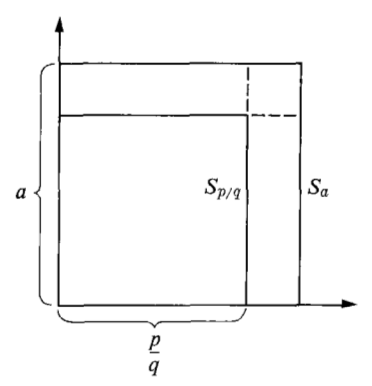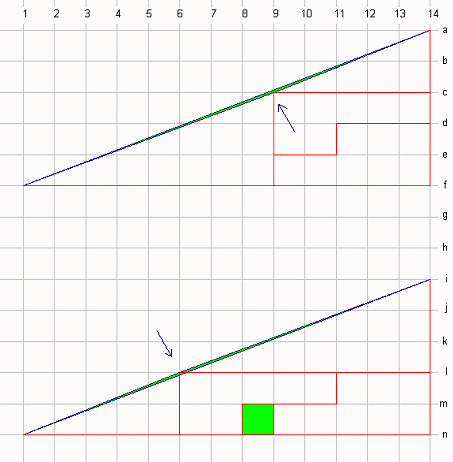When we learn to find area enclosed by a curve, we are told to divide area in rectangular elements.

Taken from pp. 361 of Mathematics (Part – II), Class XII textbook, NCERT
But, how do we always know the value of area of rectangle? In this post, I will try to prove this well known fact in the spirit of Euclid and Cauchy.
Let’s define:
- Boundary: A boundary is that which is an extremity of anything.
- Figure: A figure is that which is contained by any boundary or boundaries.
- Triangular region : A triangular region is a figure which is the union of a triangle and its interior. Also the sides of the triangle are called edges of the region and vertices of the triangle are called vertices of the region.
- Polygonal region: A polygonal region is a plane figure which can be expressed as the
union of a finite number of triangular regions, in such a way that if two of the
triangular regions intersect, their intersection is an edge or a vertex of each of them. - Square region: It is the union of a square and its interior.
The structure in our geometry is
where is the set of points,
is the set of lines,
is the set of planes,
is distance (a function satisfying first three properties of metric function),
is angular measure (a function defined for angles, with real numbers as values of the function, satisfying following postulates) and
is the area function satisfying following postulates:
is a function
, where
is the set of all polygonal regions and
is the set of all real numbers.
- For every polygonal region R,
.
- If two triangular regions are congruent, then they have the same area.
- If two polygonal regions intersect only in edges and vertices (or do not intersect at all), then the area of their union is the sum of their areas.
- If a square region has edges of length 1, then its area is 1.
Proposition 1. If a square has edges of length
(
a positive integer), then its area is
.
Proof. A unit square region can be decomposed into square regions, all with the same edge
as

Then all smaller square have the same area (divide each square into triangles using diagonals and then use Postulate 3 to prove that all of them have same area). Therefore
(from Postulate 4) and
.
Proposition 2. If a square has edges of rational length
, then its area is
.
Proof. Such a square can be decomposed into squares, each of edge
as:

If is its area, then
Proposition 3.[Peter Lawes] If a square has edges of length
, then its area is
.
Proof. Given a square with edges of length
. Given any rational number
, let
be a square of edge
, with an angle in common with
, as:

Then, hence
lies inside
. For some real number
(by using Postulate 4) we get:
But, selection of being arbitrary, the upper-bound should be unique. Since there exists a unique supremum of the set consisting all possible side lengths of smaller square in
, we can claim:
We can prove this claim by following the proof of statement: . Hence:
Theorem: Area of rectangle is equal to the product of length of any two adjacent sides.
Proof. Given a rectangle of base and altitude
, we construct a square of edge
, and decompose it into squares and rectangles as:

Then from Postulate 4, we get:
REFERENCE:
Moise, Edwin (1990). Elementary Geometry from an Advanced Standpoint. Addison-Wesley Pub. Co.
Thanks to Dr. Shailesh Shirali for pointing out this beautiful book.




You must be logged in to post a comment.